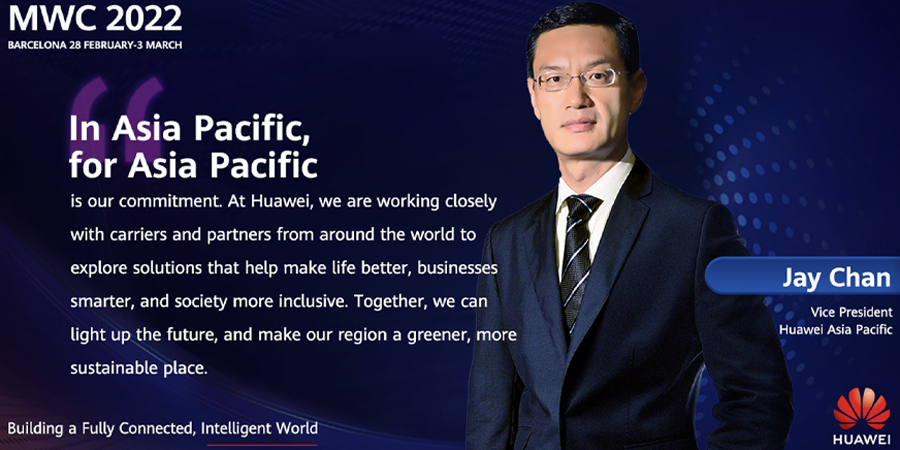At the MWC2022 in Barcelona, Huawei releases their GUIDE business blueprint and innovative solutions focusing on digitalization and carbon neutrality for the future of ICT. The global leading provider of ICT infrastructure and smart devices vows at the online media roundtable to empower the green and sustainable future of digital economy in the Asia Pacific region.
Existing theories and architectures are unable to support explosive growth in digital demand.
Forecasts show that over 50% of global GDP will be digitalized in 2022. As the global digital economy develops rapidly, the demand for digital products and services has exceeded expectations. Huawei's rotating chairman Guo Ping explained that as Shannon's theorem and the von Neumann architecture continue hitting severe bottlenecks, the industry must explore new theories and architectures to reshape the technological paradigm to achieve digital sustainability.
Huawei has been upholding the concept of "make technology and nature live together", and has continued to invest in reducing carbon emissions, increasing the use of renewable energy, promoting circular economy, and guarding nature with technology. Huawei is committed to integrating digital technology and power electronics to promote the energy revolution, accelerate the digitization of energy, enable industrial upgrading in thousands of industries, and become an enabler of carbon emission reduction.
By creating synergies between IT and CT, cloud and edge, and cloud and networks, Huawei hopes to help operators go digital and intelligent and achieve new revenue growth. In Asia Pacific, for example, Huawei's OneStorage solution has helped one operator cut TCO by 30%.
Carbon reduction impacts the long-term vitality of the digital economy.
On carbon neutrality, Guo said, "Connectivity density and computing power determine the strength of the digital economy, but it should also maintain long-term vitality. So, we need to consider a new dimension, carbon reduction."
Huawei currently adheres to a "More Bits, Less Watts" strategy in this area. In addition to improving its fundamental digital capabilities, Huawei has committed to making its products 2.7 times more energy efficient by making breakthroughs in areas like theories, materials, and algorithms. Huawei's third-generation massive MIMO products fully utilize the multi-antenna technology to improve energy efficiency by 30% compared with peer products.
As part of its efforts to create a greener and more sustainable digital world, Huawei will increase investment in sustainable green solutions, leveraging clean power generation, electric transportation, and smart energy storage, to support the Asia Pacific region’s goals of cutting carbon emissions, promoting renewable energy, and contributing to a circular economy, according to Jay Chen, vice president of Huawei Asia Pacific. Through advances like these, the ICT industry is able to help other industries reduce their own carbon footprints.
In Sarawak, one of the largest states in Malaysia with around 2.8 million population, Huawei's intelligent micro-grid solution is supporting sustainable power supply for local villagers. As part of The Rural Electrification Masterplan, this advanced solution contains an energy storage system and supports diesel generator access, which helps to provide 24/7 electricity supply to the village, and even for up to three days when there is insufficient sunlight.
“‘In Asia Pacific, for Asia Pacific’ is our commitment. At Huawei, we are working closely with carriers and partners from around the world to explore solutions that help make life better, businesses smarter, and society more inclusive. We also love to share how our ICT technology is helping make the world a greener, more sustainable place. Together, we can light up the future," said Jay Chen.
To support the digital ecosystem in Asia Pacific, Huawei in 2021 has announced that it will invest US$50 million to develop 500,000 digital talents for Asia Pacific in the next five years, and invest US$100 million over three years to cultivate the startup ecosystem in the region.





